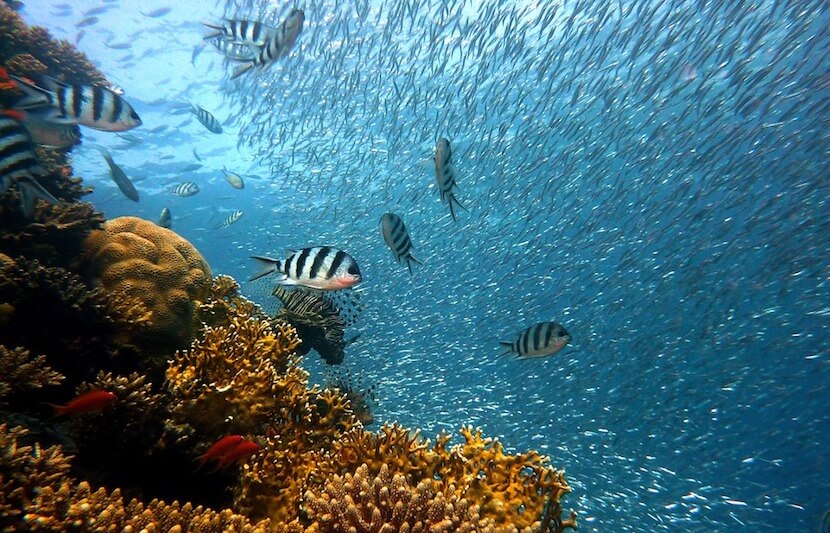Tiny, camouflaged snails are harming coral reefs already vulnerable to degradation from rising sea temperatures, overfishing and pollution.
Researchers at the Georgia Institute of Technology discovered groups of thumbnail-sized snails preying on the coral species Porites cylindrica by sucking their fluid like a tick, and found that they can reduce coral growth by up to 43 percent in less than a month.

The research was conducted by Cody Clements, a postdoctoral fellow at Georgia Tech, and Mark Hay, a Regents Professor and Teasley Chair in the School of Biological Sciences.
The study is published in the journal Ecological Applications.
The snail
The research began accidentally when Clements was working on a project in a heavily degraded reef area, and started noticing the tiny snails.
“I was fragmenting branches from colonies and noticed these snails,” he said in a statement.
“I wondered why I had never seen them before, then I started looking around and noticed they were everywhere.”
According to Clements, the snails were covered in marine growth and difficult to see, but upon further observation, he noticed that they were more common in areas where fishing was permitted.
“When he checked, he found that the snails really were much more common in the fished areas than in the protected areas,” said Hay.
“We then wondered if they were having much of an impact and found that their feeding considerable suppressed the growth of the corals upon which they fed.”
In areas protected from fishing, Clements never found more than five of the creatures on a single coral colony.
But, on degraded reefs where fishing was permitted, he found hundreds of snails on single colonies — as much as 35 times more than in protected areas.
This is, because in coral ecosystems, fish play an important role in keeping predators and seaweed under control — so when reef areas are overfished, predation levels are likely to rise.
To test the damage of the snails and their presence in overfished areas, the two researchers devised an experiment.
The study
For the first part of the study, Clements isolated coral branches in reefs near Votoa Village on Fiji’s Coral Coast and attached snails to them.

Then, after a period of 24 days, he compared the growth of coral branches that were infested with the predators to those that were untouched, and found that the snails reduced coral growth by 18 to 43 percent, depending on their size.
“A single snail can do a considerable amount of damage,” Clements said in a statement.
“They are sucking the juice out of the coral. If you have a lot of snails feeding on a single coral colony, it can be very hard for the colony to thrive.”
Then, to confirm their suspicion that overfishing is related to the problem, Clements tethered individual snails to reefs in both protected and unprotected areas.
The results
The researchers found that, in the areas protected from fishing, the snails had been eaten by triggerfish and other species that are able to crack the snail shells with their teeth.
Compared to unprotected areas with few remaining fish, the snails in protected areas were 220 percent more likely to be preyed upon.
“From the predation evidence, it looked like the fish were eating the snails,” Clements said in a statement.
“It seemed like the main element driving the difference was the protection status of the area where the snails were tethered.”
The researchers also found, unexpectedly, that the shells of larger snails had been taken over by hermit crabs, which may or may not be ecologically important.
The importance of protecting reefs
Rising sea temperatures, overfishing and pollution have caused the mass degradation of coral reefs around the world — a problem that has immense consequences for the world, the researchers explain.
“Healthy coral reefs provide many ecosystems to both other species and to humans. For other species, they are the ‘ecosystem engineers’ that build the structures that feed, provide hiding spaces, etc.,” said Hay.
“For humans, reefs provide protein (fish) for approximately 1 billion people, and they provide protection from storm surge by buffering coastal villages by growing upward with sea level rise and thus are ‘biological sea walls’ that protect against floods and storms without cost to us.”
The researchers stress the importance of protecting reefs from overfishing and predation, especially for the The Porites coral, as it often provides the foundation for reefs and is considered one of the most hardy species.
The Porites coral is less susceptible to disease, less attractive to crown-of-thorn sea stars, and more resistant to damage from seaweeds.
Unfortunately, it’s also a favorite feeding grounds for the tiny snails.
To combat the issue, the physical removal of the snails and reducing fishing pressure are both viable options, according to Hay.
During the research, Clements removed over 2,000 snails with needle-nosed pliers.
But the researchers suggest that overfishing is a main concern that needs to be addressed.
“Protecting coral reef areas and keeping food webs intact is really important to maintaining these communities,” Hay said in a statement.
“Overfishing takes a lot of key species out of the communities so that all you have left is the marine equivalent of cockroaches and dandelions. Taking out the fish takes away the functions the fish have been providing to the community.”



